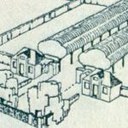0152 Green Reform, Landscape Gardening and War Cemeteries
The Case of Leberecht Migge and Harry Maasz
Identifiers (Article)
Identifiers (Files)
Abstract
World War I represents a turning point in the cemetery reform process that had taken off in Germany around 1900. The "Hain" or sacred grove had been the core feature of many civil cemeteries since the opening of the Waldfriedhof in Munich designed by Hans Grässel (1860-1939) in 1907, and it initially became the leitmotiv of most soldiers’ graveyards. However, this approach was reinterpreted and transformed during the war to include the functionalist and typification ideas that would eventually transform the professional debate in the interwar years. This shift is explored through the military cemeteries designed by landscape architects Harry Maasz (1880-1946) and Leberecht Migge (1881-1935).
Statistics


License

This work is licensed under a Creative Commons Attribution-NonCommercial-NoDerivatives 4.0 International License.



